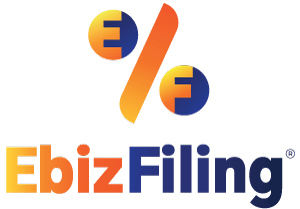
-
July 18, 2022
What is EPF? Eligibility Criteria for EPF Withdrawal and Tax on EPF Withdrawal
Table of Content
Introduction
Subscribers to the Employee Provident Fund (EPF) will receive an interest rate of 8.1 percent in 2021-22, according to the EPFO. Individuals can benefit from contributions to an EPF account by claiming a deduction under Section 80C. (see how here). It would also be useful to know what income tax or TDS implications an EPF withdrawal would have. Let’s have a quick look at “What is EPF? And it’s eligibility Criteria”, before moving further with the Income Tax on EPF Withdrawal.
What is EPF?
The Employees Provident Fund and Miscellaneous Act of 1952 established the PF (Provident Fund) or EPF scheme. The Employee Provident Fund Organization establishes all the rules and regulations. The Ministry of Labour and Employment oversees the EPFO’s operations.
In other words, The employee Provident Fund is a fund whose objective is to offer lump-sum payments to employees upon their departure from their place of employment. This is in contrast to a pension fund, which includes both lump sum and monthly pension payments. Employees contribute a portion of their monthly pay to the EPF scheme.
It is a great way for employees to save a percentage of their salary that will come in handy in the event of an emergency or when they retire. EPFO registration is needed by law for employers with more than 20 employees.
Eligibility Criteria for EPF Withdrawal
- The prerequisites that an employee must meet in order to withdraw EPF funds are as follows:
- Only after retirement it is possible to take the entire amount from the EPF account. Early retirement is only considered by EPFO if a person has attained the age of 55.
- EPFO allows a withdrawal of 90% of the fund one year before retirement.
- The EPF corpus may be taken if an employee is laid off or retrenchment happens before retirement.
- Parts of your EPF can only be withdrawn in the event of a medical emergency, property purchase or construction, or higher education.
- After one month of unemployment, only 75% of the corpus can be withdrawn, according to the new law. Once a person gets employment, the remaining funds will be transferred to a new employee provident fund account.
- Employees do not have to wait for their employer’s permission to withdraw their EPF (Employee Provident Fund) amount. The approval can receive online by linking their Aadhar and UAN to their EPF account.
- You must have the following items when filing a claim online::
-
- An active UAN number
- Bank account numbers are connected to UAN PAN number, and Aadhar number are entered into the EPF database.
Information on EPF Withdrawal Taxable and Exemption
-
If EPF withdrawal done by an entity before 5 Years
If you leave the EPF before completing 5 years of continuous service, TDS (Tax Deducted at Source) will be deducted. When calculating 5 years of service, your previous employer’s term is also taken into account. No TDS is deducted if you transfer your EPF amount from an old employer to a new employer and have worked for the new employer for at least 5 years. Remember that you must compute the exact 5 years; if you are off by a few days, you will be penalized.
-
Temporary employees who have worked for 5 years
During this time, you are not on permanent payroll, and your employer is not compelled to contribute to your EPF. After a period of time, you are placed on the payroll, and your employer begins contributing to your EPF. After five years, you decide to resign. However, because this period includes months when you were not on the payroll, your employer will charge TDS from your EPF withdrawal because the 5-year period is not complete.
-
When EPF is unrecognized EPF (Employee Provident Fund)
When Commissioner of Income Tax Department does not approve certain funds at that time it is considered as an Unrecognized PF (Provident Fund). It could have been acknowledged by the commissioner of provident funds or another formal body. However, in order for a fund to enjoy the income tax benefits of a recognized supplied fund (withdrawals are tax-free after 5 years), it must be certified by an income tax commissioner. If you are a member of the URPF, whether or not you have completed 5 years of service, your withdrawals are taxed. Our recommendation is to inquire about the status of your EPF with your employer.
Income Tax on EPF Withdrawal
Scenario |
Tax on EPF Withdrawal |
|
Before completing 5 years of continuous service, a sum of INR 50,000 was deducted. |
There is no TDS deduction, but if the individual is in the taxable category, he must report the EPF withdrawal on his tax return. |
|
Before completing 5 years of continuous service, a sum of more than INR 50,000 is deducted. |
If a PAN is provided, TDS will be deducted at a rate of 10%; if a Form 15G/15H is provided, no TDS will be deducted. |
|
After 5 years of continuous service, the EPF is withdrawn. |
There is no TDS deduction. Furthermore, the individual is not required to provide the same in return of income because the withdrawal is tax-free. |
|
Transferring PF from one account to another while changing jobs. |
No TDS is deducted. Furthermore, because the money is not taxable, the individual is not required to provide the same in return. |
|
If an employee’s employment is terminated before completing 5 years of continuous service owing to illness, the employer’s business is ended, and the reasons for the withdrawal are beyond the employee’s control. |
TDS-free. Furthermore, because the withdrawal is tax-free, the individual is not required to provide the same in return of income. |
3 Components for EPF Withdrawal
-
Interest on Employees Contribution
When there is an income from other source at that time this portion is Taxable.
-
Interest on Employer’s Contribution
The employer’s contribution, as well as the income earned on it, is completely taxable. In your tax return, it is taxed as a head salary. You’ll probably see an entry under salary TDS in your Form 26AS for it if TDS is deducted on it.
-
Employee’s Contribution
This is the amount you have put into your EPF. This part of your withdrawal is not subject to taxation. However, if you claimed a deduction for your contribution under section 80C in previous years, you maybe required to pay additional tax as if you had not claimed 80C for those years.
Conclusion
If an EPF balance is removed before 5 years, TDS is deducted at a rate of 10%. Ensure to provide your PAN when making a withdrawal. TDS will be deducted at the highest slab rate of 30% if PAN information are not given. If your total income, including EPF withdrawals, is NIL, you can also file Form 15G/15H. If you submit Form 15G/Form 15H, no TDS (Tax Deducted at Source) will be deducted.
Employee Provident Fund
Extend Social Security to your employees. Register for Provident Fund.
About Ebizfiling -





Reviews
LEROY D’MELLO
01 Oct 2018Highly recommended - I have been using their services for the past 2 years. Work completed very thoroughly and on time. Very efficient team, and responsive to all queries.
Neeta Vakhariya
09 Mar 2018Delighted to work with them. Very efficient and hardworking staff.
Peoplestrat
16 Mar 2019Well coordinated effort to file our first GST return. Thanks to the team.
April 2, 2024 By Team Ebizfiling
Compliance Calendar For The Month of April 2024 As the new financial year begins in April, businesses and taxpayers around the country have new opportunities and responsibilities. It provides an excellent opportunity for strategic planning and budgeting, allowing businesses to […]
March 8, 2024 By Siddhi Jain
Section 194B of Income Tax Act, 1961: Prize, Betting, Lottery Winning Tax Introduction In the present day, there is a wide range of game shows, including the popular Kaun Banega Crorepati (KBC) and Fear Factor, as well as reality shows […]
February 29, 2024 By Siddhi Jain
Compliance Calendar For The Month of March 2024 Welcome to the Compliance Calendar for the month of March 2024. March being the last month of the Financial Year 2023-24, it becomes crucial for businesses and individuals alike must keep track […]